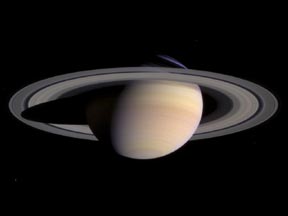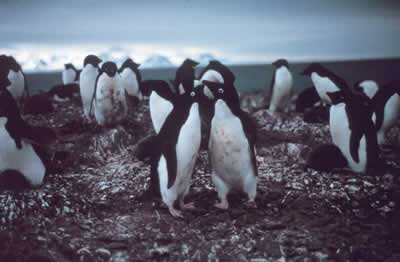This picture of the planet Saturn was taken in March 2004. The picture was taken by a spacecraft called Cassini.
Click on image for full size
Image courtesy NASA/JPL/Space Science Institute.
Space Day 2004
News story originally written on May 4, 2004
Thursday, May 6th, is Space Day. Space Day is a time for people who are interested
in space to learn more about it and to go to fun events about space. The first
Space Day was in 1997.
If you want to find out more about Space Day, go to the Space
Day web site.
It will tell you whether there are any Space Day events going on near you!
You might also be interested in:

Thursday, May 6th, is Space Day. Space Day is a time for people who are interested in space to learn more about it and to go to fun events about space. The first Space Day was in 1997. If you want to find
...more
Scientists have recently discovered that thousands of Adelie Penguins thrive in patches of the chilly Southern Ocean near Antarctica's coastline. In these special areas of the ocean, called polynyas,
...more
Scientists have learned that Mount Hood, Oregon's tallest mountain, has erupted in the past due to the mixing of two different types of magma. "The data will help give us a better road map to what a future
...more
The Earth's mantle is a rocky, solid shell that is between the Earth's crust and the outer core, and makes up about 84 percent of the Earth's volume. The mantle is made up of many distinct portions or
...more
Some geologic faults that appear strong and stable, slip and slide like weak faults, causing earthquakes. Scientists have been looking at one of these faults in a new way to figure out why. In theory,
...more
It was another exciting and frustrating year for the space science program. It seemed that every step forward led to one backwards. Either way, NASA led the way to a great century of discovery. Unfortunately,
...more
The Space Shuttle Discovery lifted off from Kennedy Space Center on October 29th at 2:19 p.m. EST. The weather was great as Discovery took 8 1/2 minutes to reach orbit. This was the United States' 123rd
...more














